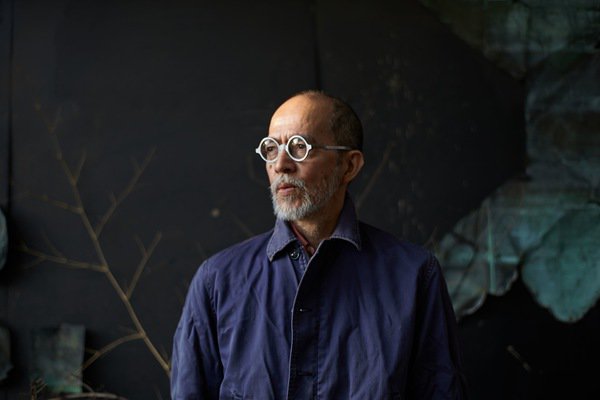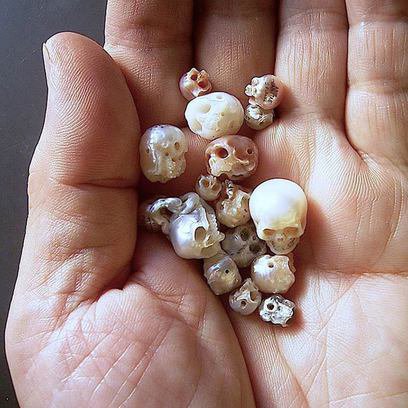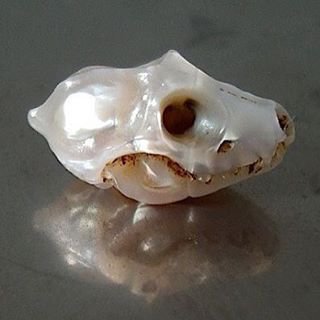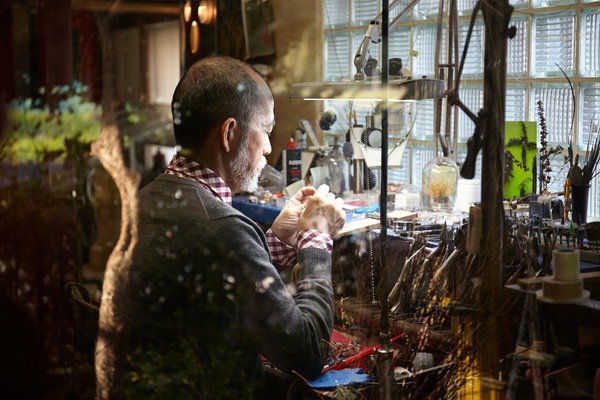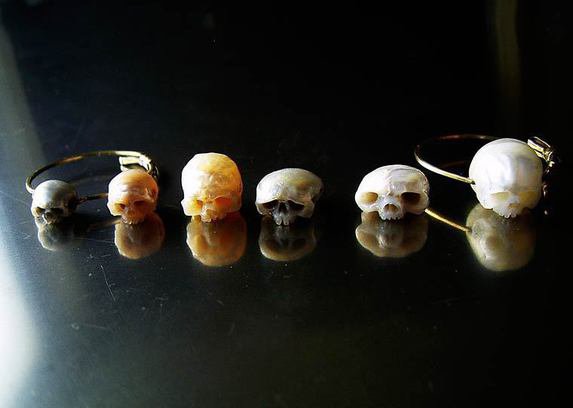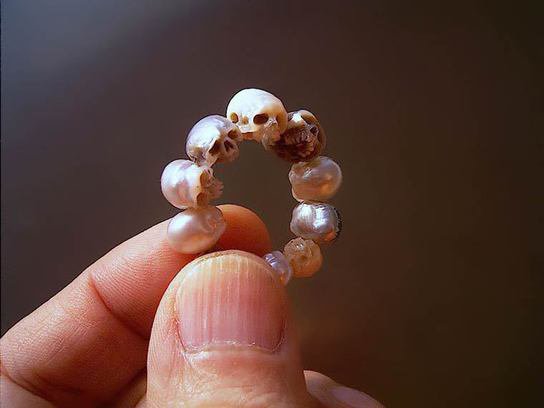THE HOURGLASS
Artist Background:
Shinji Nakaba. Interview By Alyssa Shapiro, Translated By Rika Noda
April 7, 2016
Where and when did you first have the idea to carve pearls?
I wanted to break the traditional idea of jewelry making. I did not want to be restricted by rules and traditions, which restricts creativity. By becoming an expert on traditional jewelry making, I wanted to utilize that skill to create something that is unconventional. For example, traditionally it is never ideal to carve pearls because it would ruin its integrity. I always thought pearls looked unnatural when polished to make them look smoother, to fix scars or scratches. Or when I tried to carve cultured pearls, the core would always emerge, and I ruined the pearls by peeling off the nacre. Even with knowing all these challenges, I’ve always had this devilish thoughts of “carving pearls” in the back of my mind. Around 2010, a friend gave me pearls that did not have a core, so I started carving inward as much as I wanted, and the result was absolutely stunning. I was so shocked by its beauty; however, I was not sure if this could be sellable or even durable to wear, so I asked my friend to wear it for a year. After one year, the skull looked even more interesting with a weathered surface. Also, it did not break, thus I thought this could be sellable! I’ve experimented with different type of materials to carve out skulls (crystal, ivory, coral, precious stones,) but the ones I carved out of pearls are by far the best in terms of the durability. I also thought the contradiction between pristine pearls turning into these dark objects seemed even more appealing. I now believe peals are born to be carved into skulls, I would call them “Fairy Skulls. ”I believe innovation is an offspring of “outlaw” and “curiosity".
What is it about pearls as opposed to gems or other stones that drew you to them?
I am captivated by the unknown potential of pearls. I feel only pearls can make my idea of ephemeral beauty into reality.
Please describe your process — do you know what you plan to carve before you have the pearl in hand, or does the pearl dictate how you are to handle it?
I start with the pearls that are imperfect, never perfectly round. I prefer ones that have a slightly uneven surface. I start looking at curves and dents to begin. Soon after, cheekbones and backbones are starting to emerge—it’s almost accidental. I see these features every time. Before I lose this vision, I immediately mark these image directly on the pearls then start carving. I need to concentrate on the teeth as well as the signature in the back the most. Right before I complete the carving, I polish the work so I can clear my mind and reexamine the work.
How would you describe your history as an artisan? What have been your greatest influences?
I was influenced by the counter culture and hippie movements when I was in high school. I was a rebel not able to confirm to society’s norm, and always wanted to live free. I thought about what it was that I was good at, and how to make this idea into reality, so I decided that I would make my own creations. I tried all kinds of jobs to achieve this desire. In my hometown was a dressmaking shop so I started learning dressmaking. Then I went into hair styling, then to shoe making, then to couture dressmaking. During this job-hopping period, I was introduced to contemporary jewelry making. It was not a world of status symbol, but was a self-expression. I realized this would be where I belong, and where I can express myself! So I decided to learn about the basics of traditional jewelry making in vocational school, but I quit after three months. I became interested in antique jewelry making but there was no school with a mentor I wanted to learn from, so I decided to teach myself the craft. I sold my beloved car to buy tools, turned one of my rooms into a shop, then started as a jewelry artist. It was year 1974, I was 24-years-old.
I was never good at learning from someone else so I basically taught myself by examining old pieces of work. I traveled all over the world to see and learn from traditional art, visited British museums, the Met, Italy to see cameo, as well as Koufu Prefecture in Japan, famous for its crystal sculptures. I also studied from books about precious jewelry sculpting but the best lesson I learned was from actual work — by examining and actually living with these objects.
I love going to antique or flea market for inspiration. Also Carl Faberge is an inspiration.
What do you think about when you are carving these pearls?
My heart is always pounding with excitement, and I would be thinking, “Would I be able to create something beautiful?” Or “I am failing this time?!”
What is the significance of the skulls — do you have a fascination with death, or the body, or…?
I think the artist’s mission is to obscure the border of the other world and the world we live in, and this is what I am trying to express through my work.
What are some of your favorite past or current projects?
I loved the period when I had my own store between 1992-1998. I would just create jewelry on a whim in the morning and sell it in the afternoon. I did not use precious material at the time. It took so much courage to open the store. I was in charge of everything from interior design and showcases to of course the jewelry. I still apply what I learned from this experience today.
Where is your favorite place to go to be inspired?
I like taking a walk in the mountains in my backyard, my mind and senses clear up after taking a walk, and I am more in-tune to diversity of color, contrast, texture, scale, etc. Perhaps I become more wildly intuitive.
What stands the test of time for you in art, especially wearable pieces like this jewelry?
I feel my role as an artist is to show that ordinary objects are beautiful. When the new work is completed, it is more about the product itself than the meaning behind it, (whatever the material could be). As the proverb goes “The proof of the pudding is in the eating.” Anyone can understand and appreciate by experiencing the art and you don’t need explanation, money or resources to have good life! I want to provide that experience as an artist.
How would you love to see this edition worn?
I think my jewelry goes well with the naked body, t-shirts, or a mink jacket. Anything goes well.
